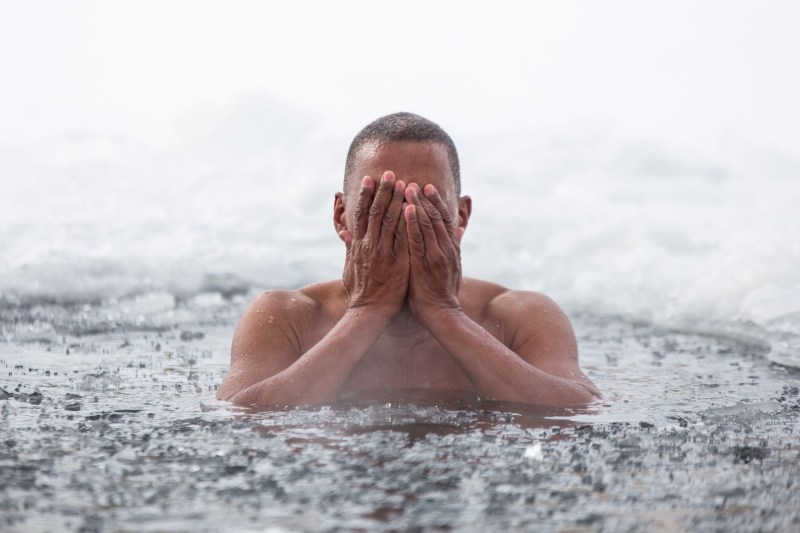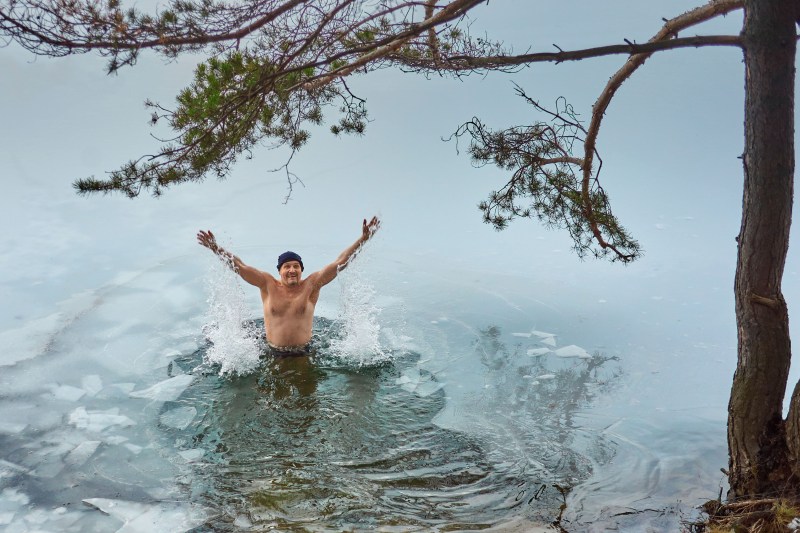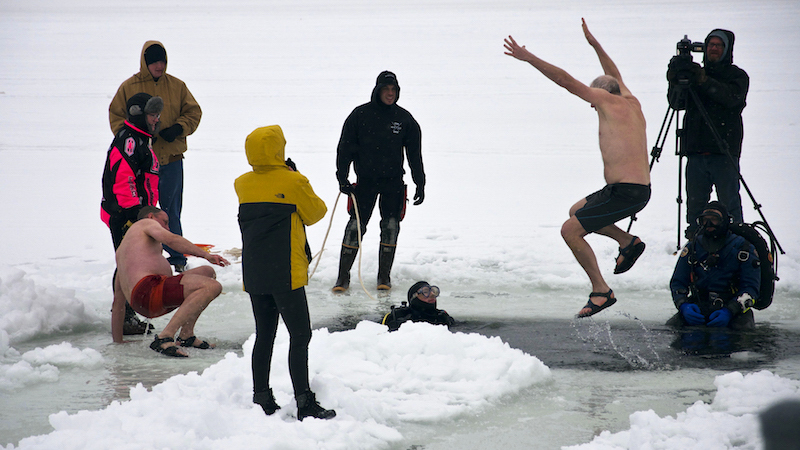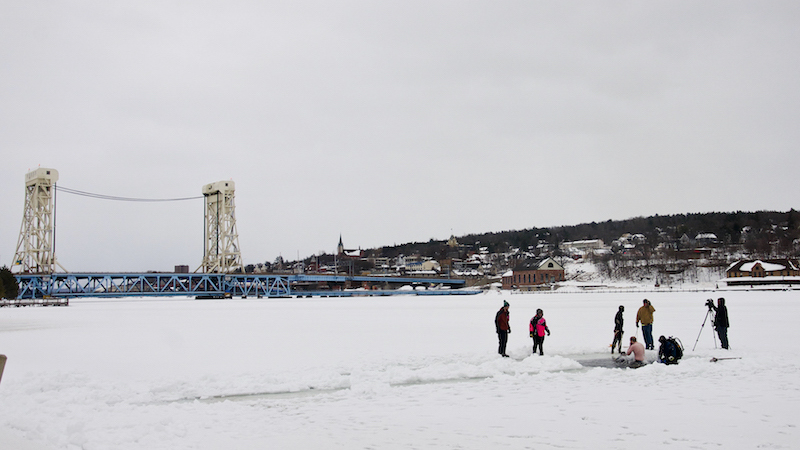
Avanto, a Finnish word that translates to “hole in the ice,” refers to the practice of taking a plunge into icy water after a steamy sauna session. While this practice may seem extreme to some, it is deeply ingrained in Finnish culture and is associated with a bunch of health benefits.
In this article, we’ll explore what avanto is, the benefits it provides, the risks associated with it, and how to safely practice it.
What is avanto?
Avanto is a traditional Finnish practice that involves drilling a hole in a frozen lake and dipping in after a sauna session. It’s more than just a health and wellness practice in Finland, it’s a cultural tradition that has been passed down from generation to generation.
Like sauna whisking, the practice of avanto is believed to date back hundreds of years, when saunas were used for more than just relaxation. In the past, avanto was considered to be an essential part of winter survival, as it was believed to be a way to keep the body healthy and strong during the long, cold winter months.
Today, avanto is still widely popular in Finland. Many public saunas and hotels near lakes open up the ice during winter to facilitate this practice, but it’s definitely not for the faint of heart.

Benefits of avanto
While the practice of avanto is deeply rooted in Finnish culture, it actually has become more popular outside of Finland’s borders in recent years in the form of the polar plunge. This is in part due to the numerous health benefits. Here are just a few:
Increased circulation
When you immerse your body in cold water, your blood vessels constrict, which forces blood to flow more slowly. However, this response triggers a counter-effect in the body, so once you exit the water, your blood vessels dilate, and blood rushes back to your extremities, increasing circulation throughout your body.
Increased metabolism
When you’re exposed to cold water, your body has to work harder to maintain its internal temperature, which can lead to an increase in metabolic rate. This increased metabolic rate can help to burn more calories. It probably won’t be significant enough for noticeable weight loss, but avanto has lots of other benefits, too.
Reduced inflammation
Cold water immersion has been used for centuries to reduce inflammation and swelling in the body, and many athletes and fitness enthusiasts swear by the practice as a way to speed up recovery after workouts or injuries.
Provides an invigorating endorphin rush
Jumping in icy water after a sauna session can stimulate the release of endorphins, which are natural feel-good chemicals that can induce a sense of euphoria and invigoration. This rush of endorphins can leave you feeling energized and refreshed, making avanto a great way to boost your mood and enhance your overall well-being.

Risks of avanto
While avanto has amazing benefits, it’s important to acknowledge the potential risks associated with the practice.
Cold water shock
Cold water shock occurs when the body is suddenly exposed to cold water, causing an involuntary gasp reflex and a sudden increase in heart rate and blood pressure. This reflex can cause you to inhale water, leading to drowning or other serious health complications. Cold water shock can also cause muscle spasms and cramping, making it difficult to swim or stay afloat.
To avoid this, make sure that you’re not too hot before you go in. While it might seem counter-intuitive, such a drastic internal temperature change can increase your risk for cold shock. Take a moment to cool down after a super-steamy sauna before you dip into the water for the best results.
Hypothermia
Hypothermia is another risk of avanto and occurs when the body loses heat faster than it can produce it, leading to a dangerously low body temperature. Symptoms of hypothermia can include shivering, confusion, slurred speech, and loss of consciousness. In severe cases, hypothermia can be life-threatening.
To minimize the risk of these dangers, it’s essential to take the necessary precautions when practicing avanto. Start slow and gradually increase the amount of time spent in the water as you become more accustomed to the experience.

How to safely practice avanto
If you’re intrigued by the health benefits of avanto and are considering trying the practice for yourself, it’s important to take the necessary precautions to ensure you do so safely. Before attempting avanto or the polar plunge, consider consulting your doctor, especially if you have any underlying conditions like low blood pressure or heart conditions. Here are some other tips to keep in mind:
Prepare well
Before taking the plunge, it’s essential to prepare your body for the cold water. This can include taking a sauna or warm shower beforehand. Stay hydrated, and make sure that you’re not too hungry or too full.
Know your limits
Just because your friend can stay in longer than you doesn’t mean that you should. It’s essential to know your body’s limits and not push yourself too far. Start with short dips of 10-30 seconds and work your way up to longer durations.
Start slow
When attempting avanto, don’t jump into the water all at once. Instead, start by dipping your feet, then gradually working your way up to your waist and then your shoulders. At the same time, don’t spend thirty minutes waiting for your feet to get used to the water because, let’s be real, that’s not healthy, and it won’t happen. A quick dip of your toes is all you need for starters, and then you can either head back into the sauna or enjoy the cool air for a few minutes.
Choose a safe location
Especially if it’s your first time, it’s best to go to a facility that offers Avanto. They will have put all the thought into your experience, so all you have to do is go! But if you don’t have that opportunity, it’s crucial to choose a safe location for your avanto practice. Look for a spot with a gradual incline, so you can easily get in and out of the water, and avoid jumping in from heights.

Final thoughts
Avanto is a traditional Finnish practice that offers a range of health benefits, including increased circulation, metabolism, and reduced inflammation. However, it’s important to remember that there are potential risks associated with the practice, such as cold water shock and hypothermia. By taking the necessary precautions, such as starting slow, knowing your limits, and choosing a safe location, you can safely experience the invigorating benefits of avanto.




